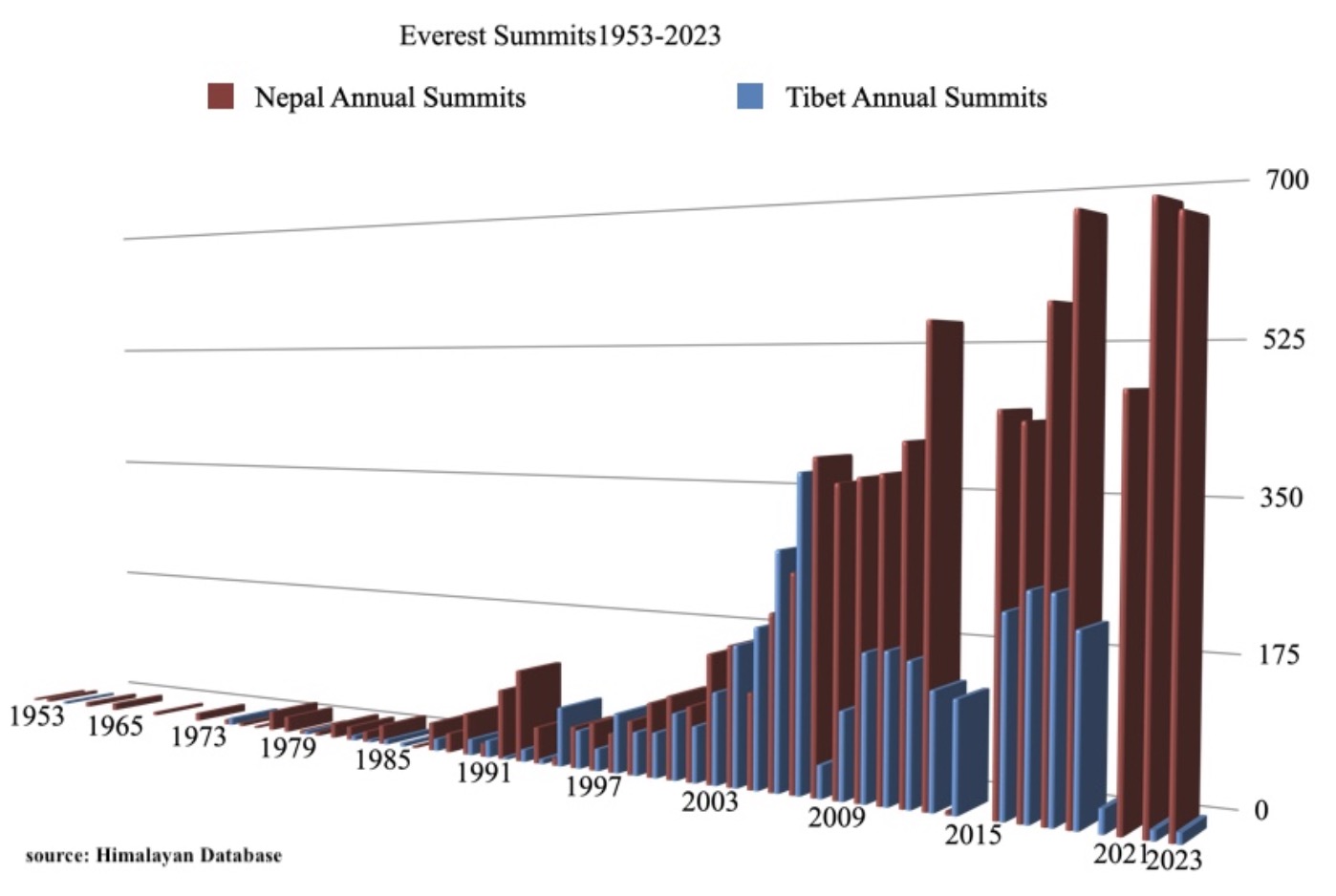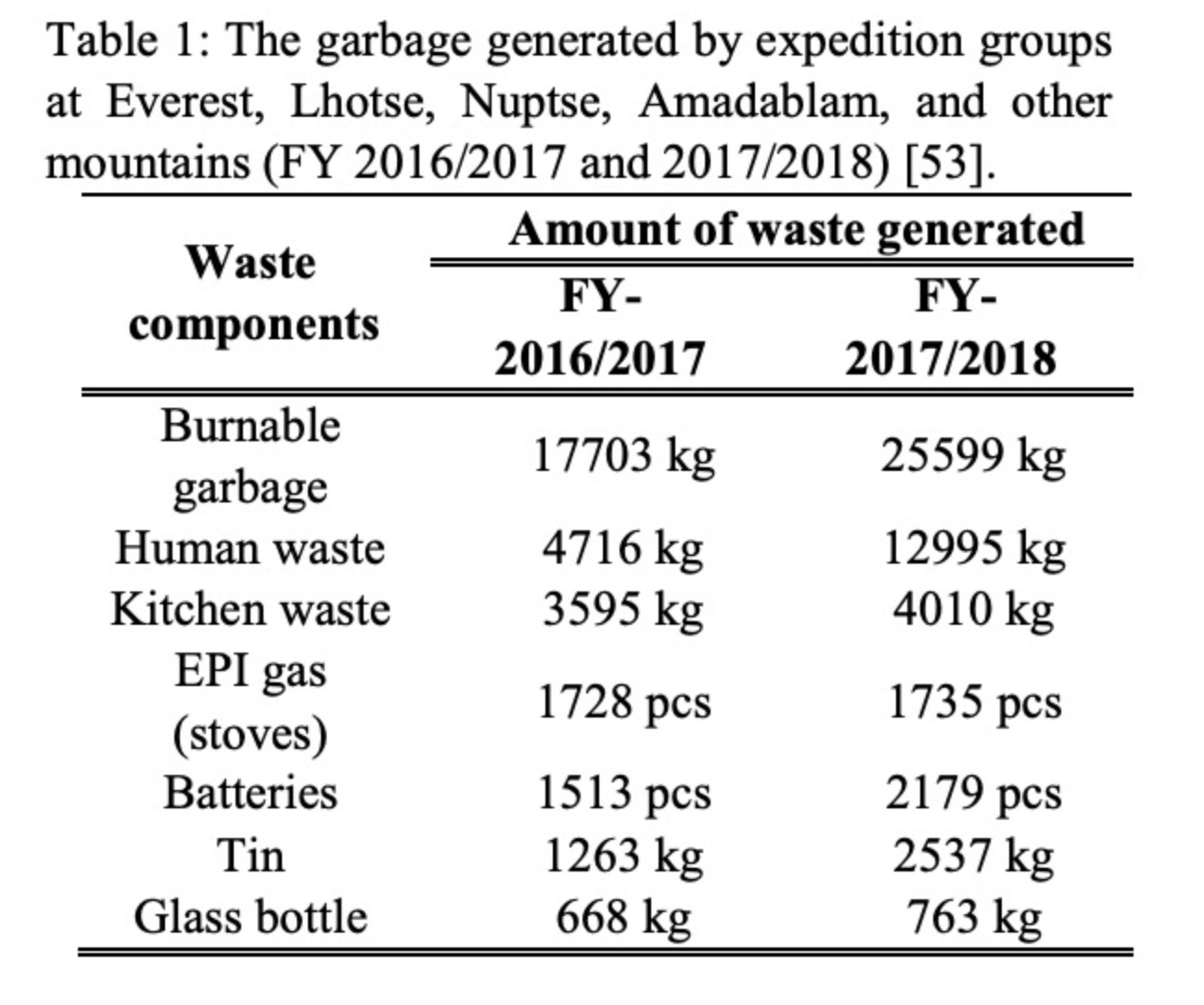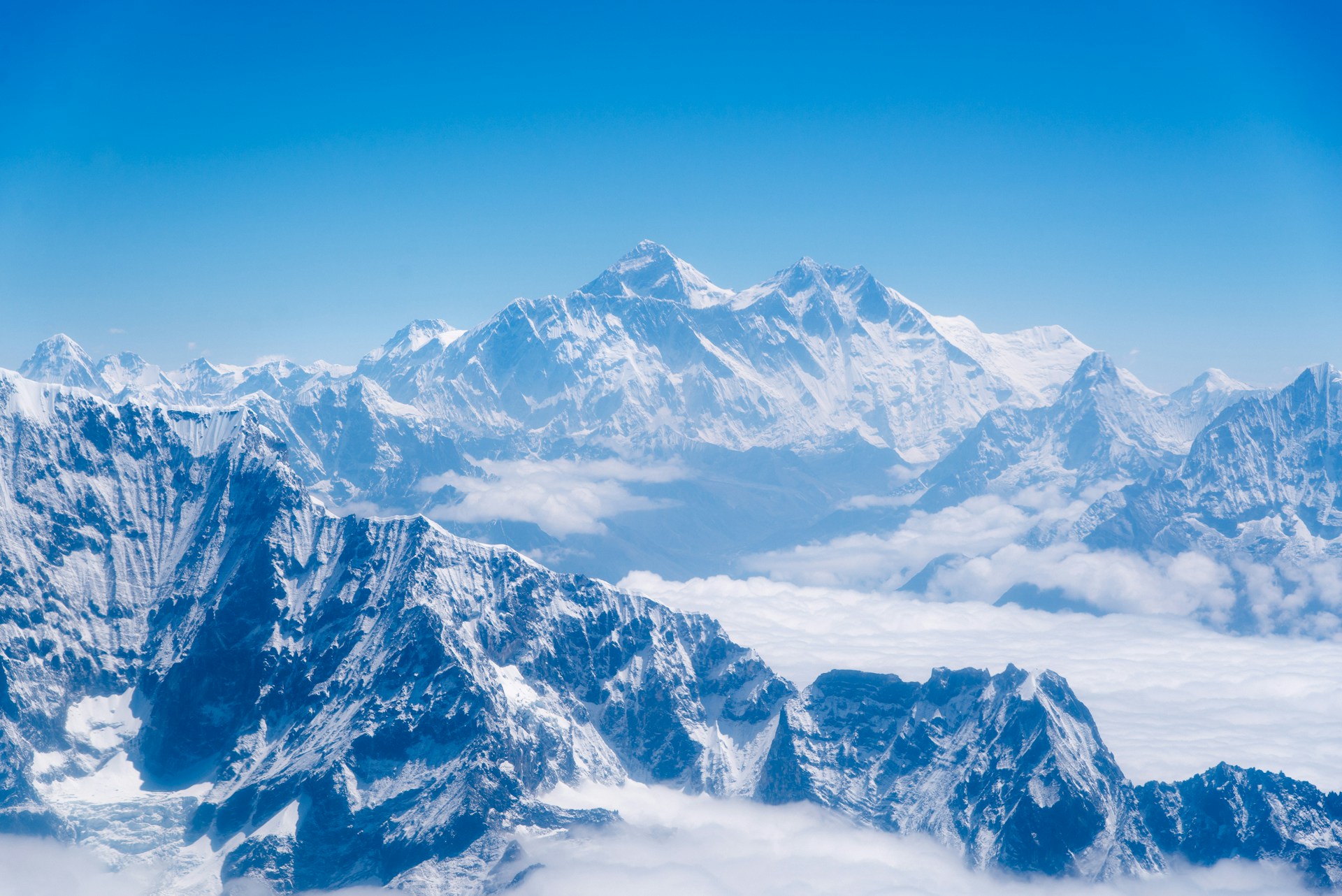If you’ve seen a headline about Everest in the last few years, it’s likely that it contained the words “death”, “trash”, or “crowds”. The iconic mountain first climbed by Tenzing Norgay and Edmund Hilary in 1953 has become emblematic of the growth of high altitude mountain climbing and the impact of climbers on the environment. The 2023 season saw a record number of permits granted (478) AND deaths (17). All indications are that the 2024 climbing season will be another record-setting year (hopefully not for the latter). These climbers, trekkers, and support staff continue to have significant impacts on the Everest region itself.
In response to these impacts (and increasing public scrutiny and negative press), Nepalese authorities recently announced a slew of new regulations. These include the addition of required “wag bags” to carry your poop, trash removal fines, limitations on tent sizes, and an unnamed “GPS device” that will be sewn into climbers clothing and cost $10-$15.

Credit: Alan Arnette
While several outlets use the terminology “GPS device”, the “$10-$15” price mentioned feels incongruous with most true GPS technology today. CNN reports the “small, passive trackers can be sewn into a jacket and don’t need power. They can be detected through packed snow up to 20 yards away and further when tracked from the air using a handheld detector.” To me, this sounds an awful lot like a Recco reflector, not a true GPS device like a Garmin inReach or SPOT.
You might be familiar with RECCO, if not as a technology, then as a logo on one of your ski jackets. The 2-part system consists of a passive reflector often sewn into jackets or pants and a handheld radar detector that is used by search and rescue teams to bounce signals off the reflector in order to locate accident victims. There are also helicopter-mounted versions of the detector, although this implementation is more rare.

RECCO is not a replacement for a beacon in the backcountry or a true GPS device, and while it may help find someone, it’s certainly not the most complete solution. There’s not nothing wrong with RECCO. It weighs basically nothing and in some situations can help SAR with body recovery. However in the challenging terrain and conditions on a mountain like Everest, it feels unlikely that RECCO has the capability to significantly change rescue or recovery operations, and it’s definitely not GPS-enabled.
And herein lies the crux. Alan Arnette, who maintains a respected blog on Everest mountaineering, feels that many of Nepal’s new regulatory changes are more of a PR campaign than true changes, and don’t go nearly far enough. Arnette provides several, more restrictive safety recommendations:
Require all climbers to have summited 7000 meters or higher before issuing them Everest permits.Require all “guides” to be IFMGA certified or at least have taken climbing, medical and rescue courses at the Khumbu Climbing Center taught by proven, qualified Everest guidesRequire that every person climbing Everest carry a handheld radioEach team monitors and writes down every climber’s (member and support) precise location when above base camp.Establish a central monitoring team at Base Camp and Camp 2 to monitor emergency frequencyPosition trained search and rescue resources at Base Camp, Camp 2 and on a rotating basis at the South Col during summit pushesLimit foreign permits to 400 qualified membersLimit team size to 25 members with 1:1 Sherpa support. BC Staff is additional.Ban any operator for one year if they have a client who is “missing” at the end of the season
Other impacts
Not only have the glaciers in the Everest region receded significantly in recent years (a factor the Nepalese government blames for recent accidents and deaths), but the rise in climbers and other tourism to Everest and the Khumbu Valley has introduced more environmental issues.
The issue isn’t new – a research paper published 20 years ago highlighted the impact of adventure tourism in the region, saying “alpine ecosystems (4,000–5,200 m) within the Imja and Gokyo valleys have been significantly impacted…as a result of poorly controlled tourism”. It’s a problem that has only gotten worse.
In 2019, “The highest-ever recorded sample of microplastics was found on the “Balcony” of Mount Everest at 8,440 meters, one of the last resting spots before reaching the summit. This microplastic is likely coming from the clothing and equipment worn by climbers, highlighting the impacts of humans on even the highest reaches of our planet.” (Reaching New Heights in Plastic Pollution)

Adventure and ecotourism are often lauded as a net positive for many locals and local economies. It can bring economic opportunities to more rural areas, and provide the visibility and capital to finance the infrastructure needed to support said tourism. There is the potential for symbiosis between tourists, locals, and environmental protection. However, that’s the best case scenario. The reality can be much different.
There’s no doubt that Everest tourism has been a boon for local economies. But a 2023 paper goes so far as to conclude that *“the current approach of tourism development and planning [in the Everest region] does not satisfy the objectives of ecotourism development. It has neither equitably benefitted local residents nor significantly reduced the use of forest resources, environmental degradation, and deterioration of cultural and built heritage.”*
The researchers make a point to recognize that while tourism always has impacts, the issues at hand here are largely in the way it has been designed and implemented in this region. “Lack of capacity, knowledge and leadership skills of local residents (porters, farmers and non entrepreneurs) have also largely hindered their benefits from tourism development because they could not effectively participate and influence decision making process as well as collaborative efforts.”
And that brings us back to the discussion about safety regulations. The updated Everest regulations released over the last month or so were fraught with inconsistencies, and confusing language. Some aspects were changed or removed in subsequent weeks. Are these new regulations a thoughtful step in the right direction, or a halfhearted effort by the tourism office to counter bad press and avoid taking systemic action to address environmental and safety issues (because those actions might affect tourism revenues)? Arnette is certainly in the latter camp, contending, “There is too much money involved for Ministry Officials and operators to do anything that might reduce revenue and increase costs, even in the name of safety. But Nepal will continue to issue these so-called “safety improvements,” and the mainstream press will continue to help them in their PR campaign with little regard for the truth.”
